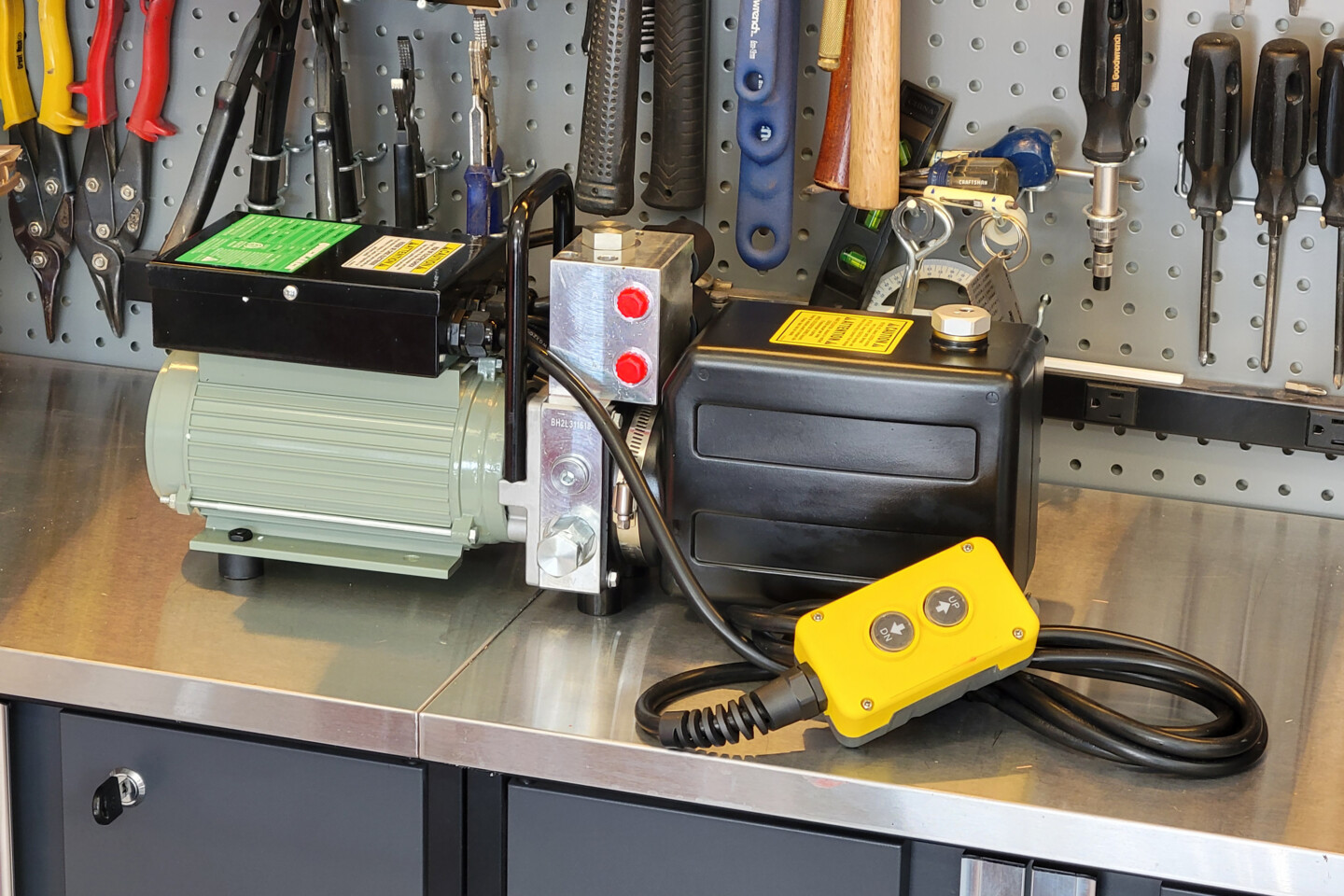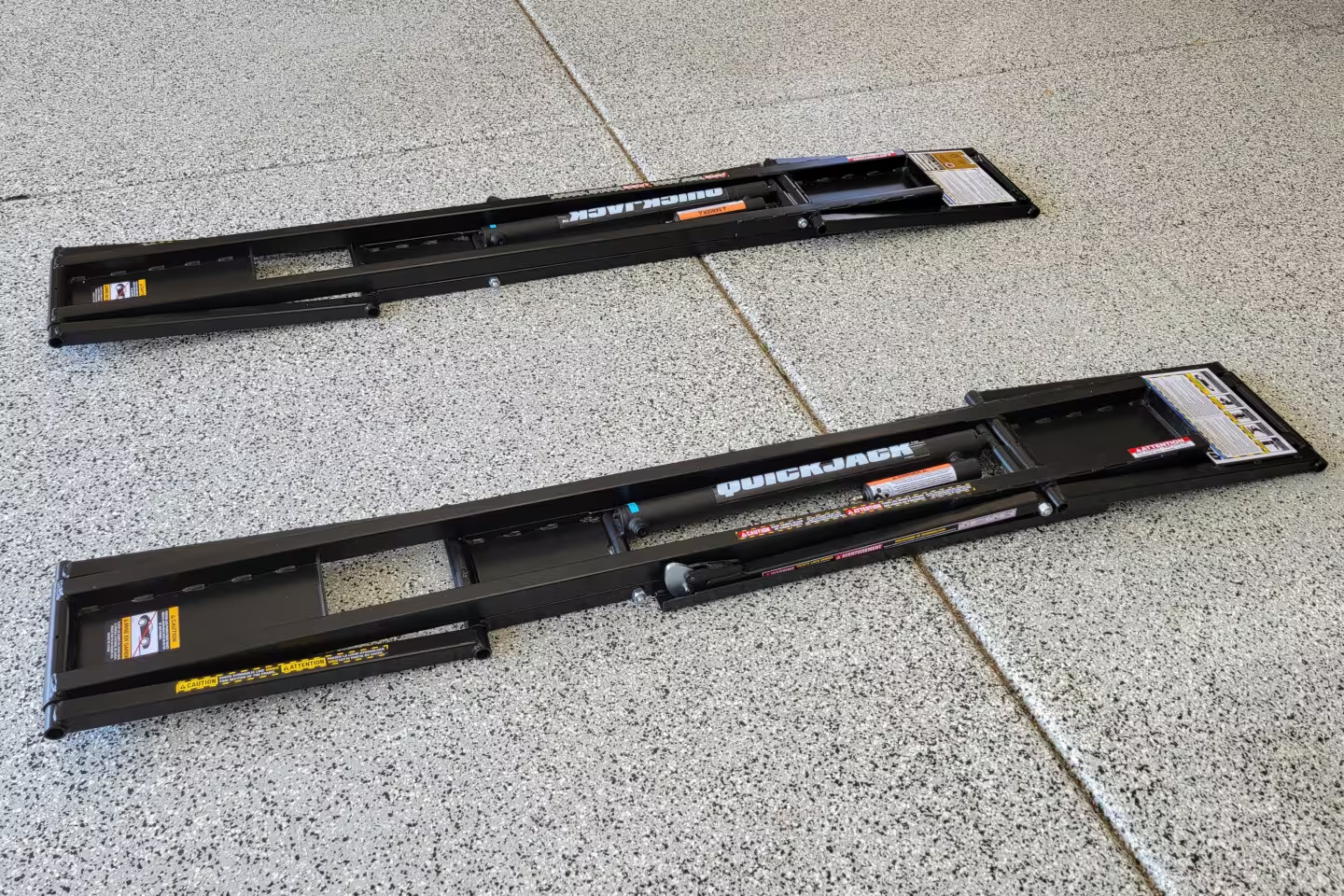As someone who has spent more time working on cars in the driveway than anywhere else, the thought of having a lift is a luxury that seems unattainable. A good jack and jack stands have been my faithful companions for over twenty years. But as age and injury catches up with us all, we start to look for better solutions. And that’s when we found in BendPak’s line of QuickJack portable car lifts.
You’ve likely seen these somewhere before, as the QuickJack itself isn’t a new invention, and has even been sold in stores like Costco. However, what caught our attention recently, was the introduction of QuickJack’s TL and TLX line of models, which offer an additional 3 inches of lift height over the previous SL lineup. It’s no surprise that the extra height appealed to us. And with a new project car sitting in the driveway, we have a whole list of projects stacking up fast, so we decided it was finally time to take a hard look at a QuickJack portable lift.
The lift units themselves are quite low profile. So, if you decided you just wanted to leave them in the garage and park over them, that’s a valid storage solution.
Getting The Right Model
While BendPak makes it easy to just go on the website and figure out which model is right for you, we wanted to be doubly sure we were choosing correctly. They were exceptionally polite, even though the website and all of their measuring videos really did answer all of our questions. The first thing you need to figure out is your vehicle’s curb weight. The four-digit number in the model number is, as you might have guessed, the load capacity in pounds.
Since our daily driver S550 comes in at a touch over 3,500 pounds, the two SN-95s in the driveway list at about 100 pounds less, and our new-to-us C5 Corvette another 200 pounds less than that, the 5000-series QuickJack was the obvious choice. Also, just for giggles, we looked up the curb weight of our truck only to find that it falls well within the 5,000-pound capacity of the 5000-series lifts. More on that in a bit. But, with all of the weights sorted, it was time to move on to the next measurement — length.

The centerpiece of the unit is the hydraulic pump assembly. It has a reservoir, electric pump, and hand controller to operate the whole shebang.
Measuring for length is actually a two-measurement affair. The first is your tire spread. That’s the distance from the front of your rear tire, to the rear of your front tire, 3 inches off the ground….
Click Here to Read the Full Original Article at DragzineDragzine…

